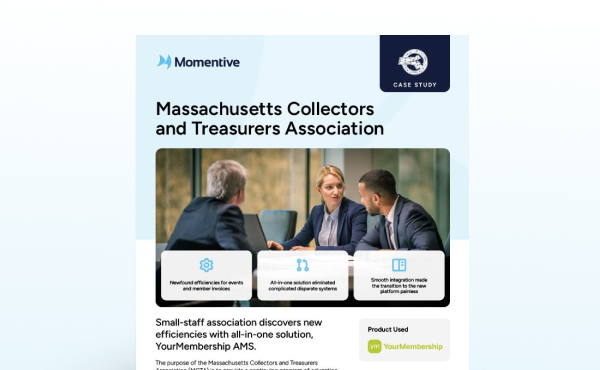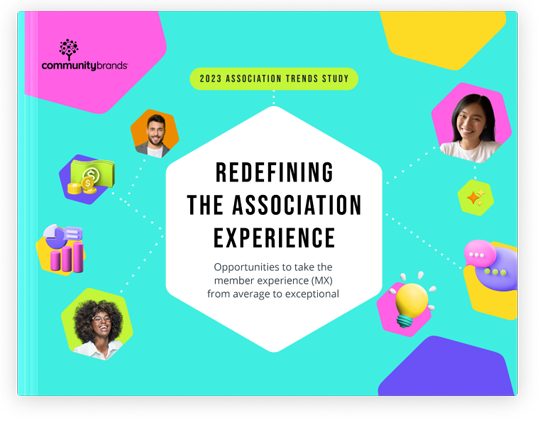How do you measure the success of your association’s events? Here are six easy tips.
Events are a big deal for many associations. They help you drive revenue, stay connected with your members, and give your members a place to learn and network.
You probably put a good deal of time and effort into your association events. But how do you know if they’re a success?
Six tips for measuring event success for your association
Here are six simple (yet effective!) tips for measuring the success of your association’s events and evaluating event performance:
1. Set clear goals for your event.
Goal setting can be tricky, but it’s important if you want to be able to measure the success of your event. After all, how do you know if your event is a success if you aren’t sure what it was supposed to accomplish in the first place?
It can help to start by getting ideas down on paper. Begin jotting down what you’re trying to accomplish with the event and what key challenges you’re aiming to solve. For example, maybe you want to reach members who have never attended your association’s events. Maybe you’re trying to drive more revenue. Or perhaps you want to provide more learning opportunities for members.
Next, use these ideas as a starting point to establish clear and achievable goals. Many organizations use the SMART approach to help make defining goals more manageable.
SMART is an acronym that you can use to guide your goal-setting. It requires that each of your goals are:
- Specific – The more specific you can be about what you want to accomplish, the greater the chance you can achieve the desired outcome.
- Measurable – It’s important to know how and if you’re making progress toward your goals, when you’ve achieved them, and how you can make changes along the way when needed.
- Achievable – Make sure the goals are attainable with the resources and time available.
- Relevant – Goals should be relevant to your project and align with other relevant goals across the organization.
- Time-bound – Having a goal without a deadline leaves the goal with no urgency to reach it. Be sure that your goal includes a completion date that shows when it will be achieved.
2. Ask for member and sponsor input.
Your members and sponsors are likely the main audiences for your event. So, consider getting input straight from them as to what would make your event valuable to them. You can ask about anything from location, content, and session formats to their goals for attending your association’s event.
Some easy ways to ask for member and sponsor input:
- Send a brief online survey.
- Use your online member community to start a discussion group about your event.
- If your association has a member advisory committee, then ask them for feedback at the next committee meeting.
- Have informal conversations with members and sponsors as you interact with them throughout the year.
If needed, adjust your goals based on the feedback you get.
3. Establish event success metrics, or key performance indicators (KPIs).
Your event goals should be measurable (Remember, that’s the “M” in SMART goals!). To measure how your event is tracking toward your event goals, decide what key performance indicators (KPIs), or metrics, will help you monitor and measure your progress.
Depending on the specific goals for your event, here are some metrics that you might want to track:
- Number of registrants/attendees
- Number of sponsors
- Sponsor dollars
- Total funds raised from event
- Number of members who have registered for the first time
- Number of members who have attended more than one event
- Number of members who received continuing education credits at your event
- Number of inquiries or help requests your association receives about the event
4. Set up dashboards and reports.
To track the event metrics that you’ve established, you must have a way to view data. An ideal way to do this is to use your association management software (AMS) to set up dashboards for a quick overview of key metrics as well as reports to give you more detailed data.
For example, YourMembership AMS is built for small to mid-size associations like yours and includes dashboard and reporting capabilities that make it easy to track key performance indicators (KPIs).
5. Send a post-event survey.
Numbers can be extremely helpful, but so can qualitative data. Send a post-event survey to get feedback about how your event measured up to attendee expectations.
Depending on your event goals, some questions to ask in your post-event survey might include questions about:
- The online registration experience
- The quality and quantity of learning or networking opportunities
- How engaged attendees felt at the event
- How well the event met attendees’ goals and expectations (and why)
6. Evaluate.
Review data from your dashboards, reports, and survey results to gauge how well you met your event goals. Also, use this time as an opportunity to evaluate what you can do to incorporate learnings from this event into your next event plan.
Here are a few ways to put your data into action:
- Schedule a meeting with your team to go over the data and consider how you can incorporate feedback into your next event.
- If you need more details, follow up with attendees, speakers, and sponsors. Just be mindful, based on their survey answers, as to whether you think they’ll be open to additional contact from your organization.
- For attendees, speakers, or sponsors who indicate changes your organization could make to improve the event experience, consider presenting them with your ideas for improvements and ask what they think.






